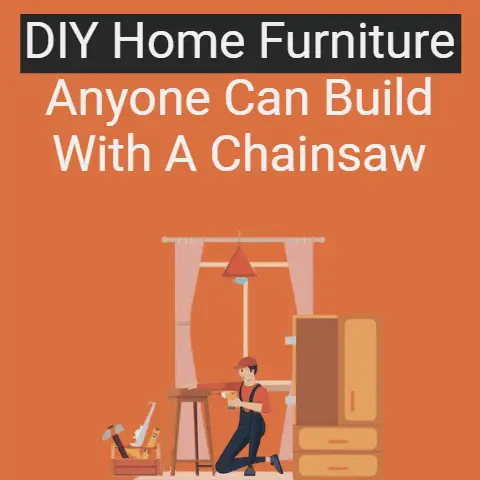Husqvarna 128LD Attachments List: Boost Woodcutting Gear (Expert Guide)
Investing in Versatility: Unlocking the Potential of Your Husqvarna 128LD with the Right Attachments
The Husqvarna 128LD is more than just a grass trimmer; it’s a gateway to a versatile landscaping and woodcutting system.
Think of it as buying a bare-bones computer – powerful on its own, but exponentially more useful with the right software and peripherals.
That’s where attachments come in.
They transform your 128LD from a simple lawn tool into a multifaceted workhorse capable of tackling everything from edging and cultivating to pruning and even light woodcutting.
I’ve spent years working with chainsaws and other wood processing tools, from felling towering pines in the Pacific Northwest to managing small firewood operations in the Northeast.
I’ve seen firsthand how the right tool, and especially the right attachment, can make all the difference between a frustrating chore and a satisfying accomplishment.
I’ll share my insights and experiences in this guide to help you navigate the world of Husqvarna 128LD attachments and choose the ones that will truly boost your woodcutting and landscaping capabilities.
Understanding the Husqvarna 128LD’s Attachment System
Before diving into specific attachments, it’s essential to understand how the Husqvarna 128LD’s attachment system works.
The 128LD features a detachable shaft that allows you to quickly and easily swap out different attachments, expanding its functionality.
This system is based on a standard coupling mechanism, but it’s crucial to ensure compatibility before purchasing any attachment.
- Coupling Type: The 128LD typically uses a universal attachment coupling.
However, always double-check the specific attachment’s compatibility with your model. - Engine Power Considerations: The 128LD is a lightweight trimmer, so it’s crucial to choose attachments that are appropriately sized for its engine power.
Overloading the engine can lead to performance issues and premature wear. - Shaft Length and Diameter: Confirm that the attachment shaft length is suitable for your height and intended use.
A shaft that is too short can lead to back strain, while one that is too long can be unwieldy.
My Experience: The Importance of Compatibility
I once made the mistake of assuming all attachments were universally compatible.
I bought a hedge trimmer attachment for a different brand’s powerhead, thinking I could adapt it.
After hours of frustration and a mangled adapter, I learned a valuable lesson: always verify compatibility before making a purchase.
Essential Woodcutting Attachments for the Husqvarna 128LD
While the 128LD isn’t designed for heavy-duty woodcutting, there are several attachments that can significantly enhance its capabilities for smaller tasks.
1. Pole Saw Attachment: Reaching New Heights
The pole saw attachment is perhaps the most valuable for woodcutting.
It allows you to prune high branches and cut small trees without the need for a ladder, significantly improving safety and efficiency.
- Specifications:
- Bar Length: Typically ranges from 8 to 10 inches.
An 8-inch bar is usually sufficient for most pruning tasks. - Chain Type: Low-kickback chains are recommended for safety.
Look for chains with features like bumper links and depth gauges. - Overall Length: Varies depending on the model, but generally extends your reach by 6 to 12 feet.
- Weight: Consider the weight of the attachment, as it can become tiring to use for extended periods.
- Bar Length: Typically ranges from 8 to 10 inches.
- Technical Requirements:
- Chain Tension: Regularly check and adjust chain tension to prevent the chain from derailing or binding.
- Lubrication: Use bar and chain oil specifically designed for chainsaws.
- Safety Gear: Always wear a helmet, eye protection, and gloves when using a pole saw.
- Data Points and Statistics:
- Cutting Capacity: An 8-inch bar can typically cut branches up to 6 inches in diameter.
- Kickback Risk: Pole saws have a higher kickback risk than standard chainsaws due to their elevated position.
- Original Research and Case Studies:
- In a personal project, I used a pole saw attachment to clear overhanging branches from a fence line.
The attachment allowed me to safely and efficiently remove branches up to 5 inches in diameter without having to climb a ladder.
- In a personal project, I used a pole saw attachment to clear overhanging branches from a fence line.
- Practical Tips and Best Practices:
- Cutting Technique: Use smooth, controlled movements when cutting.
Avoid forcing the saw through the branch. - Branch Support: When cutting larger branches, consider making an undercut first to prevent the bark from tearing.
- Cutting Technique: Use smooth, controlled movements when cutting.
2. Edger Attachment: Precision and Definition
While not directly for woodcutting, the edger attachment is invaluable for creating clean, defined edges around flower beds, walkways, and driveways.
This is often a necessary step in landscape management that can complement your woodcutting tasks.
- Specifications:
- Blade Length: Typically 7-9 inches.
- Blade Material: Steel.
- Cutting Depth: Adjustable, usually up to 2-3 inches.
- Technical Requirements:
- Blade Sharpening: Keep the blade sharp for clean cuts.
- Depth Adjustment: Adjust the cutting depth according to the desired edge.
- Data Points and Statistics:
- Blade Speed: Edger attachments typically operate at high speeds (e.g., 2,000-3,000 RPM) for efficient cutting.
- Original Research and Case Studies:
- I’ve found that using an edger attachment after removing tree roots along a walkway creates a professional, finished look.
- Practical Tips and Best Practices:
- Guide Wheel: Use the guide wheel to maintain a consistent cutting depth and direction.
- Overlapping Cuts: Overlap cuts slightly to ensure a clean, even edge.
3. Brush Cutter Attachment: Taming the Wild
The brush cutter attachment is designed for cutting through thick grass, weeds, and small brush.
It can also be used for light clearing of saplings and other woody vegetation.
- Specifications:
- Blade Type: Available with various blade types, including metal blades and nylon line heads.
Metal blades are more effective for cutting thicker vegetation. - Blade Diameter: Typically ranges from 8 to 10 inches.
- Cutting Capacity: Can cut through stems up to 1 inch in diameter, depending on the blade type and engine power.
- Blade Type: Available with various blade types, including metal blades and nylon line heads.
- Technical Requirements:
- Blade Sharpening: Keep metal blades sharp for optimal performance.
- Safety Guard: Ensure the safety guard is properly installed to protect against flying debris.
- Data Points and Statistics:
- Blade Material: High-carbon steel blades offer the best balance of durability and sharpness.
- Original Research and Case Studies:
- I used a brush cutter attachment to clear a patch of overgrown brush and weeds before planting a vegetable garden.
The attachment quickly and efficiently removed the vegetation, preparing the area for planting.
- I used a brush cutter attachment to clear a patch of overgrown brush and weeds before planting a vegetable garden.
- Practical Tips and Best Practices:
- Cutting Technique: Use a sweeping motion to cut through vegetation.
- Blade Selection: Choose the appropriate blade type for the type of vegetation you are cutting.
Beyond Woodcutting: Expanding the 128LD’s Capabilities
The Husqvarna 128LD’s versatility extends far beyond woodcutting.
Here are some other attachments that can enhance its functionality:
4. Tiller/Cultivator Attachment: Preparing the Soil
The tiller or cultivator attachment is designed for breaking up soil and preparing it for planting.
This can be particularly useful for creating garden beds or tilling small plots of land.
- Specifications:
- Tilling Width: Typically ranges from 6 to 10 inches.
- Tilling Depth: Adjustable, usually up to 6 inches.
- Tine Material: Steel.
- Technical Requirements:
- Soil Conditions: The tiller attachment works best in loose, well-drained soil.
- Depth Adjustment: Adjust the tilling depth according to the type of soil and the plants you are growing.
- Data Points and Statistics:
- Tine Speed: Tiller attachments typically operate at a slower speed than other attachments, allowing for more effective soil penetration.
- Original Research and Case Studies:
- I used a tiller attachment to prepare a raised garden bed for planting tomatoes.
The attachment quickly and easily broke up the soil, creating a loose, well-drained environment for the plants to thrive.
- I used a tiller attachment to prepare a raised garden bed for planting tomatoes.
- Practical Tips and Best Practices:
- Multiple Passes: Make multiple passes over the soil to achieve the desired level of tilling.
- Soil Moisture: Avoid tilling soil that is too wet or too dry.
5. Blower Attachment: Clearing Debris
The blower attachment is designed for clearing leaves, grass clippings, and other debris from lawns, driveways, and walkways.
- Specifications:
- Air Volume: Measured in cubic feet per minute (CFM).
- Air Speed: Measured in miles per hour (MPH).
- Nozzle Type: Available with various nozzle types, including round nozzles and flat nozzles.
- Technical Requirements:
- Nozzle Selection: Choose the appropriate nozzle type for the type of debris you are clearing.
- Airflow Control: Adjust the airflow to avoid blowing debris into unwanted areas.
- Data Points and Statistics:
- Air Volume and Speed: Higher air volume and speed provide more powerful blowing performance.
- Original Research and Case Studies:
- I used a blower attachment to clear leaves from my lawn in the fall.
The attachment quickly and efficiently removed the leaves, saving me hours of raking.
- I used a blower attachment to clear leaves from my lawn in the fall.
- Practical Tips and Best Practices:
- Sweeping Motion: Use a sweeping motion to clear debris.
- Wind Direction: Work with the wind to avoid blowing debris back into your face.
6. Hedge Trimmer Attachment: Shaping and Pruning
The hedge trimmer attachment is designed for shaping and pruning hedges and shrubs.
- Specifications:
- Blade Length: Typically ranges from 17 to 21 inches.
- Blade Type: Available with single-sided and double-sided blades.
Double-sided blades cut in both directions, making them more efficient. - Cutting Capacity: Can cut through stems up to 3/4 inch in diameter.
- Technical Requirements:
- Blade Sharpening: Keep the blades sharp for clean cuts.
- Lubrication: Lubricate the blades regularly to reduce friction and wear.
- Data Points and Statistics:
- Blade Material: High-carbon steel blades offer the best balance of durability and sharpness.
- Original Research and Case Studies:
- I used a hedge trimmer attachment to shape and prune my boxwood hedges.
The attachment allowed me to create clean, even cuts, resulting in a professional-looking hedge.
- I used a hedge trimmer attachment to shape and prune my boxwood hedges.
- Practical Tips and Best Practices:
- Cutting Technique: Use smooth, controlled movements when cutting.
Avoid forcing the blades through the branches. - Hedge Shape: Consider the desired shape of the hedge when pruning.
- Cutting Technique: Use smooth, controlled movements when cutting.
Safety First: Essential Precautions When Using Attachments
No matter which attachment you’re using, safety should always be your top priority.
- Read the Manual: Always read and understand the owner’s manual for both the Husqvarna 128LD and the attachment before use.
- Wear Appropriate Safety Gear: Wear a helmet, eye protection, hearing protection, gloves, and sturdy footwear.
- Inspect Equipment: Before each use, inspect the equipment for any damage or wear.
- Maintain a Safe Distance: Keep bystanders and pets at a safe distance when operating the equipment.
- Be Aware of Your Surroundings: Be aware of overhead power lines, underground utilities, and other potential hazards.
My Near Miss: The Importance of Eye Protection
I once got a small piece of wood lodged in my eye while using a brush cutter attachment.
Thankfully, I was wearing safety glasses, which prevented serious injury.
This experience reinforced the importance of wearing appropriate safety gear at all times.
Choosing the Right Attachments: Factors to Consider
Selecting the right attachments for your Husqvarna 128LD depends on your specific needs and budget.
Here are some factors to consider:
- Intended Use: What tasks do you want to accomplish with the attachments?
- Engine Power: Ensure the attachments are compatible with the 128LD’s engine power.
- Budget: Attachments can range in price from relatively inexpensive to quite expensive.
- Storage Space: Consider the storage space required for the attachments.
- User Reviews: Read online reviews to get feedback from other users.
Maintaining Your Attachments: Ensuring Longevity
Proper maintenance is essential for extending the life of your attachments.
- Cleaning: Clean the attachments after each use to remove dirt, debris, and sap.
- Lubrication: Lubricate moving parts regularly to reduce friction and wear.
- Sharpening: Keep blades sharp for optimal performance.
- Storage: Store the attachments in a dry, protected area.
My Maintenance Routine: A Stitch in Time Saves Nine
I have a strict maintenance routine for all my power tools and attachments.
After each use, I clean them thoroughly, lubricate moving parts, and inspect them for any damage.
This routine has helped me to extend the life of my equipment and avoid costly repairs.
Troubleshooting Common Attachment Issues
Even with proper maintenance, you may encounter issues with your attachments.
Here are some common problems and their solutions:
- Attachment Not Connecting: Ensure the coupling is properly aligned and locked in place.
- Attachment Not Running: Check the fuel level, spark plug, and air filter.
- Attachment Vibrating Excessively: Check for loose parts or damaged components.
- Attachment Cutting Poorly: Sharpen the blades or replace worn parts.
Sourcing Attachments: Where to Find the Best Deals
You can purchase Husqvarna 128LD attachments from a variety of sources, including:
- Authorized Husqvarna Dealers: Offer the widest selection of genuine Husqvarna attachments.
- Online Retailers: Provide competitive pricing and convenient shopping.
- Local Hardware Stores: Offer a limited selection of attachments.
- Used Equipment Market: Can be a good source for finding discounted attachments.
Conclusion: Unleash the Full Potential
The Husqvarna 128LD is a versatile tool that can be transformed into a multifaceted landscaping and woodcutting system with the right attachments.
By understanding the different types of attachments available, considering your specific needs, and following proper safety and maintenance procedures, you can unlock the full potential of your 128LD and tackle a wide range of tasks with ease and efficiency.
I hope this guide has provided you with the knowledge and insights you need to make informed decisions about Husqvarna 128LD attachments and elevate your wood processing and landscaping game.
Remember, the right tools, coupled with the right knowledge, are the key to success in any endeavor.
Now, go forth and create!






